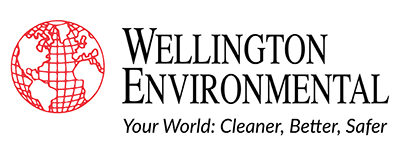COVID-19 has forced hospitals to change many practices and focus mainly on keeping everyone safe from exposure to the virus and away from past operational practices. Fortunately, this has created new ways for hospitals to respond and adapt. One such advantage is embracing technology to aid in deploying solutions to otherwise weak points in protocols to advance overall safety.
One important change created by COVID-19 was the closing and consolidation of multiple entrances into the hospital. Prior to the virus, you could enter from connected Medical Office Buildings (MOBs), loading docks, side entrances, and even some cafeterias. Now, the entrance points have been funneled down to just a few key areas and each of them is staffed and ready for check-ins. This change has produced an opportunity for collecting information on each outside vendor/contractor to verify education and vaccine status. When you add in technology, the facility can perform a more thorough check-in of personnel, track necessary data and have records accessible on all personnel from any device. Most importantly, this can be accomplished without the need for existing or additional personnel.
The solution is moving the vendors and contractors out of the manned check-in lines and to a contactless kiosk check-in point that is available 24/7. The kiosk takes the individual’s temperature (offering pass or fail status that is collected), scans a QR-Code identifying the individual and their training compliance progress as well as information on vaccine status. They are not only checked-in, but the hospital also has electronic data on each person working in the facility no matter what day or time.
Beyond knowing who is on site, the overarching goal is to educate everyone on both COVID and Infection Prevention work practices to a point where everyone understands the importance of the mission. Combining both a contactless check in with vendor tracking is an enhanced tool that provides documentation in the from of electronic reports. The kiosk offers the state-of-the-art technology, while the adjunct cloud-based training drives hands-free compliance success.
A clear analogy on why everyone must be trained
According to Michael Bell, M.D., the deputy director of CDC’s division of Health Care Quality Promotion, and the lead physician on Project Firstline, now more than ever, everyone in the hospital’s environment must be included and appropriately educated. He provided a clear example during a recent virtual presentation for the American Hospital Association, stating, “If someone walks into the hospital and lights a cigarette in the lobby, it doesn’t take a clinician to stop that person, everyone knows what should be done and corrects the situation.”
The same type of education and understanding needs to be presented on both proper COVID practices as well as Infection Prevention practices. Everyone should understand proper protocols and correct anyone that is displaying improper practices. This is clear example of how proper training can empower everyone to protect the mission.
For decades, it has been the mission of infection preventionists as well as facility managers to make sure everyone entering the facility to perform work has the education and clear understanding of proper work practices. The reality of the situation is that it has been impossible to track down every vendor and contractor entering the facility 24/7 and making sure they have received the training and actually understand the reasoning of patient safe work practices. Facilities have tried to have group safety meetings and project kick off meetings only to find out most of the people actually performing the work are missing. Similarly, requesting project managers or estimators to covey the importance of infection prevention to the workers is inadequate and inefficient.
Just recently, a hospital maintenance technician turned off an oxygen valve that took the life of two patients. According to the hospital, the valve was not clearly marked. If internal hospital maintenance personnel make mistakes like this, just imagine the mistakes uninformed outside contractors can make. The news is full of disastrous cases that seem to follow a singular narrative: vendors made mistakes because they did not understand how their actions could create such an outcome.
Now, emerging technology that meets these needs is providing the check-in requirements, tracking training completion, vaccine status, and saving the facility money. Initial calculations comparing staffed check-in points with a fully-loaded contactless kiosk have resulted in a three- to four-month payback. This is a perfect example of how technology not only saves time but collects more information and garners reports for the facility that can be used to demonstrate compliance during inspections.
This article was originally published in the March 2021 issue of Healthcare Business News.




